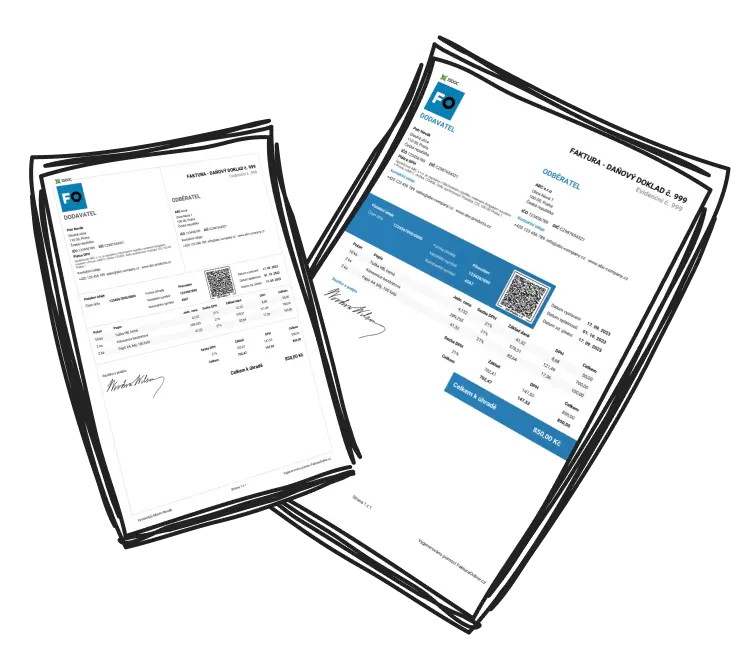Freelancers and entrepreneurs often confuse invoices with invoice statements, but it's crucial to differentiate between the two for effective financial management. An invoice statement goes beyond individual invoices to provide a detailed overview of all transactions, listing issued invoices, received payments and outstanding amounts over a specified period. This ensures a thorough understanding of cash flow between a business or freelancer and their clients.
While invoices typically focus on specific projects or scopes of work, invoice statements offer an all-encompassing snapshot of current and past transactions for any given client. These documents are pivotal for managing cash flow, maintaining business transparency, and efficiently preparing taxes.
Defining an Invoice Statement
An invoice statement is a summary of transactions relating to a client, showing both settled and outstanding invoices along with comprehensive details.
Managing Invoice Statements Effectively as a Freelancer
Handling multiple clients necessitates an efficient invoicing system. Mastering invoicing preserves clear financial records, reduces stress, and saves time.
Utilise Invoicing Software: Applications like FreshBooks or Wave automate invoice creation, send follow-up reminders, and help track outstanding payments.
Stay Organised: Arrange invoices by client or project for easy retrieval. Maintain digital and paper backups as needed.
Set Notifications: Program alerts for recurring invoices or overdue payments to stay on top of follow-ups.
Conduct Routine Audits: Dedicate time each month to corroborate invoices and payments. Regular checks assure accuracy and reduce discrepancies.

Example:
Create folders sorted by client names or project categories (e.g., 'Client B - Feb 2023'), with sub-sections for 'Paid' and 'Unpaid' invoices to easily monitor cash flow.
Why Entrepreneurs Must Organise Invoice Statements
The impact of disorganised financial records can cripple your business. A structured approach to invoice management goes beyond admin duty; it's key to success.
Monitors Payments: Identifies who has paid and who hasn't, allowing timely actions.
Simplifies Tax Filing: Enables straightforward calculation of income, expenses, and taxes.
Avoids Missed Payments: Prevents overlooked invoices to secure a stable cash flow.
Demonstrates Professionalism: Instills confidence among clients and stakeholders, reflecting a well-managed business.
Provides Insights: Discerns client behaviour, such as prompt payment patterns and profitability of services offered.

Risks of Disorganisation
Failing to maintain order may lead to late payments, tax errors, and a damaged reputation—consequences that endanger your business's future.
Top Tools for Managing Invoice Statements
Struggling with manual invoicing? These platforms can drastically improve workflow efficiency.
QuickBooks: Offers broad accounting tools with invoicing features, payment tracking, and financial reports.
FreshBooks: Favoured by small enterprises for recurring billing and monitoring overdue payments.
Zoho Invoice: Customisable options, automatic processes, and enriched analytics.
Wave: A cost-free option for freelancers, perfect for creating invoices and sending reminders.
Bonsai: Designed for freelancers, seamlessly integrates contracts and payments.
Choose a platform that aligns with your specific needs; freelancers may find Bonsai ideal, while larger companies might lean towards QuickBooks or Xero.
Tips to Keep Invoice Statements Flawless
A minor error on an invoice statement can lead to significant setbacks. Here's how to avoid them.
Utilise Uniform Templates: Incorporate all vital information like client details, invoice number, dates, and payment terms.
Validate Details: Always verify amounts, taxes, and client particulars for precision.
Automate Calculations: Use tools like Zoho Invoice to ensure calculations are spot on.
Maintain Backup: Preserve both digital and physical copies to avert data loss.
Frequent Reviews: Regularly examine statements, correct overdue entries, and rectify any discrepancies.
Common Pitfalls to Prevent:
- Incorrect client details.
- Missing invoice identifiers or dates.
- Mistakes in tax calculations.
Avert these oversights with a robust review strategy.

Conclusion: Proactively Managing Your Invoices
Managing invoices isn't merely about bookkeeping—it's about simplifying your financial landscape and boosting your business prospects.
Properly organised invoice statements ensure smooth operations, tax compliance, and sustained cash flow, all critical for freelancers and entrepreneurs. By adopting effective tools, practising streamlined processes, and preventing errors, you can zero in on expanding your business and fortifying client relations.
Why wait? Implement the strategies in this guide to refine your invoicing system and reap the benefits of a clear financial vision for your UK business.


